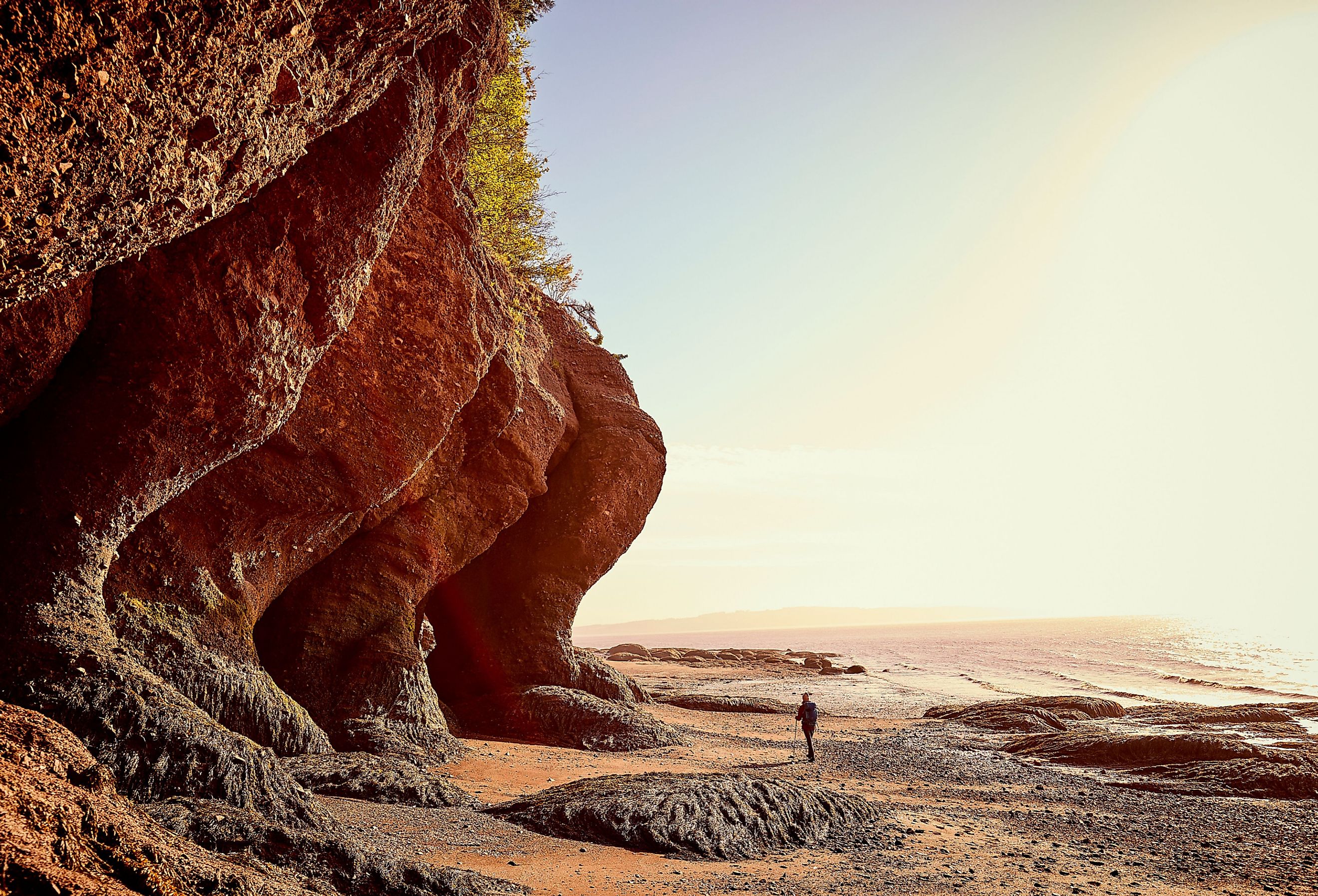
Bay Of Fundy
The Bay of Fundy is a bay between the provinces of Nova Scotia and New Brunswick in Canada. It has an extravagant tidal range, with the highest tides in the world. The bay's unique features, including its funnel-like shape, allows the tides to reach magnificent heights. Over time, these powerful tides have worn down rocks, exposing fossils dating back millions of years. The bay has an abundance of other interesting rocks including agate and amethyst. Besides rocks, the Bay of Fundy also has a diversity of marine life.
Tides
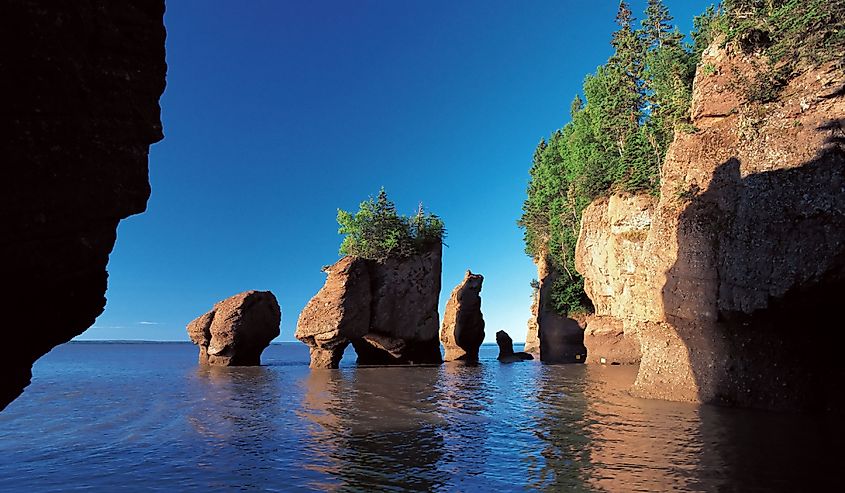
The Bay of Fundy has the world's highest tides, making it one of the world's natural wonders. The tide waters range from 11 feet along the southwest shore of Nova Scotia, to 53 feet long in Minas Basin. The force created from these tides is powerful - an equivalent of 25 million horsepower. This is enough power to stir up and mix nutrients in the water. Nutrients from the ocean floor, mud flats, and salt water marshes are all mixed together which provides an abundance of food for wildlife. Birds, whales, fish and bottom dwellers all enjoy feasting in the bay of Fundy.
These powerful tides have also worked to shape the environment, creating dramatic cliffs and sea stacks. The waves have also worn away at the red sandstone and volcanic rock in the area, exposing ancient fossils from over 300 million years ago.
Unique Features
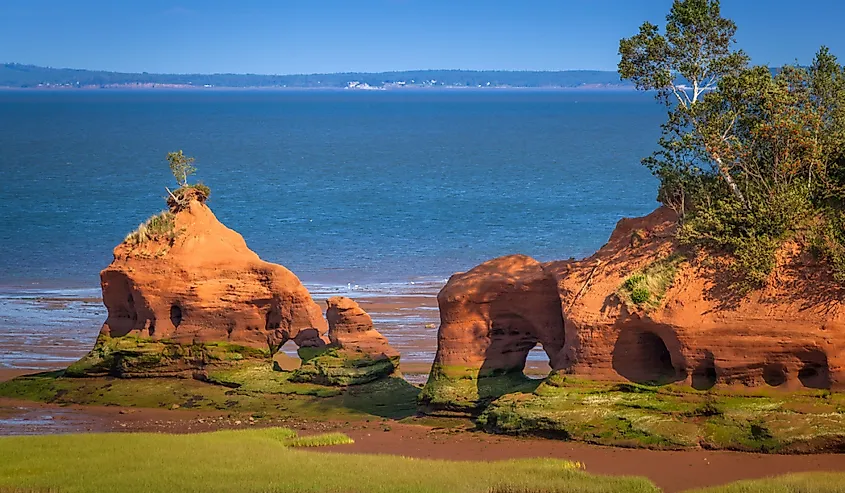
The Bay of Fundy has tides significantly higher than the world average. The average tidal range of oceans worldwide is 3 feet high. The Bay of Fundy's highest tides are more than 17 times that number. The Bay of Fundy's high tides is due to the bay's unique environmental features. The bay has a substantial amount of water and a unique shape and size that causes resonance.
These characteristics affect the bay's liquid basin's oscillation. Oscillation is when the surface rises on one end and remains constant in the middle, then rising at the other end. This creates the rhythmic sloshing sound in the water. The speed of oscillation in a basin depends on the basin's length and depth. Since the Bay of Fundy has such a large amount of water and has a unique funnel shape, the average length of the oscillation period is between 12 and 13 hours long. The unique funnel shape has another effect on the Bay of Fundy: the bay is narrower and shallower at the upper part of the bay, which forces the water higher up onto the shore.
Climate
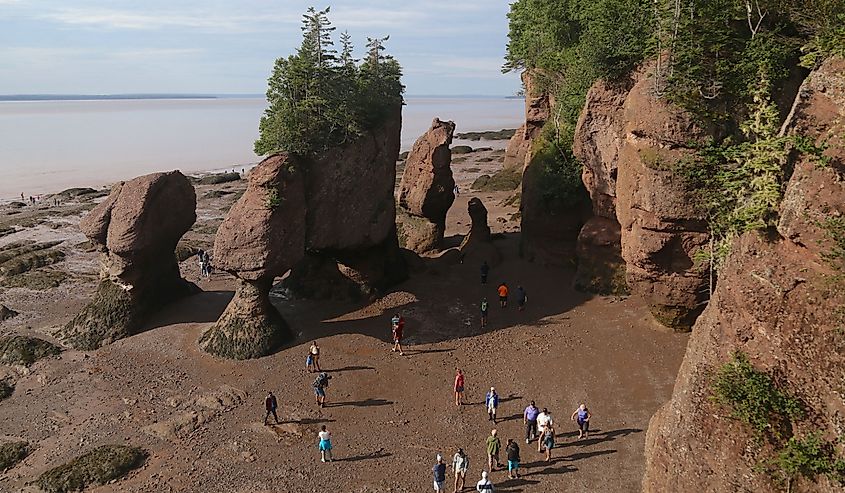
The Bay of Fundy experiences a dual weather forecast, one forecast for the coastal weather, the other for the inland weather. The waters of the Bay of Fundy, which are part of the North Atlantic Ocean, are very cold. Even in the height of summer, the water's temperature rarely exceeds 44/46F. Farther inland, the temperature is considerably warmer. Around 5-6 miles inland, the radiating heat from the ground affects the air. This makes the temperature warmer by several degrees.
In the winter months, the Bay of Fundy does not freeze over because of the water's heavy salt content. Since the water has so much salt, the bay also modifies the effects of the elements. During a winter snowstorm inland, those closer to the coast will most likely see the snow change to rain or freezing rain.
Geology
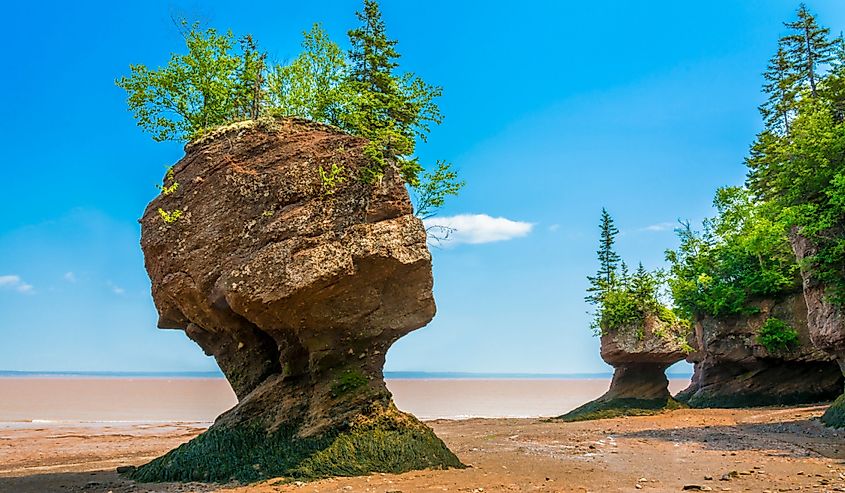
The Bay of Fundy is an ideal destination for anyone who loves fossils and interesting rocks. As the tides erode the bay's sea cliffs, they expose fossils, zeolites and semi-precious stone, which date back hundreds and millions of years. Depending on the section of the bay, different rocks exist. Some rocks commonly seen in the bay include amethyst, agate, calcite, coal, copper and jasper. Many of the bay's geological formations date back millions of years. There are 200 million year old basalt formations seen in some parts of the bay, as well as 350 million year old Carboniferous rocks dating back to the Precambrian or Devonian periods.
Marine Life
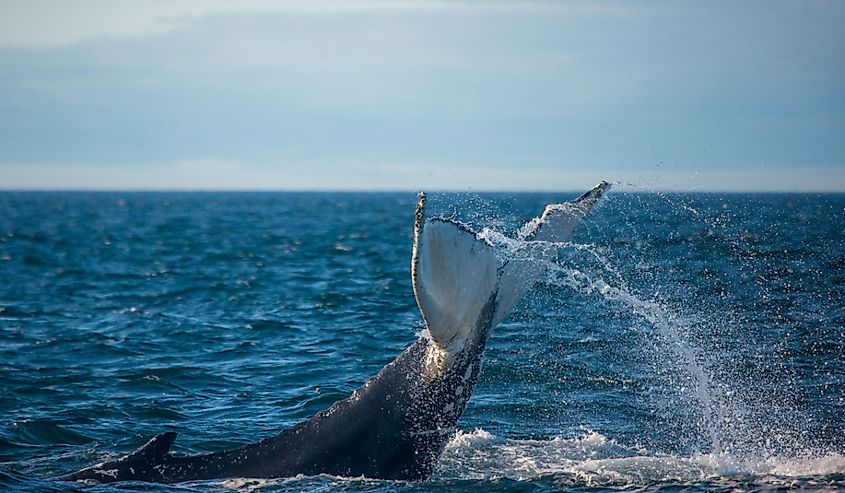
Besides interesting rocks, the Bay of Fundy also has interesting marine life. During the summer months, 12 species of whales can be in the Bay of Fundy. The bay acts as a feeding area, nursery and play area for the whales. The powerful tides in the Bay of Fundy, bring krill, squid and other fish to the whales to feast on. The abundance of food and protection the bay provides, makes the bay an ideal place for whales to give birth. Some of the most common whale species found in the Bay of Fundy include the Humpback Whale, Minke Whale, Finback Whale and the North-Atlantic Right Whale.
Besides whales, the Bay of Fundy has an abundance of other marine life. White-sided dolphins swim in the waters of the Bay of Fundy. These dolphins grow 6 to 10 meters, have a tall dorsal fin, and pointy snout. They are often recognized by their coloring. These dolphins have a yellow stripe along the side, a black back and a white belly. Harbor seals and gray seals also live in the bay. They are often seen on rocky ledges at low tide.
History
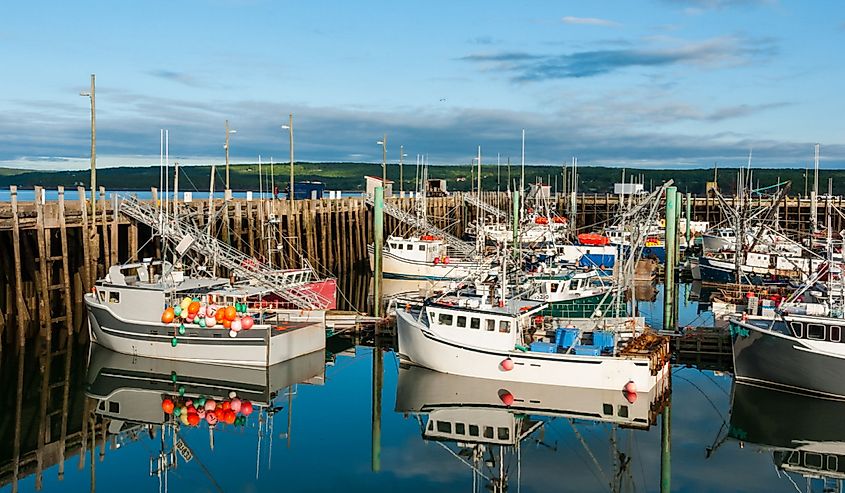
The Bay of Fundy also has a colorful and rich history. The indigenous peoples, French, English, American Loyalist and Irish people have all lived in the area throughout the years. Each group's presence is evident by the local culture, city names, traditions, and architecture in the area.
The first European settlement in North America was on an island off the Bay of Fundy in 1604. Sieur de Mons led the exhibition, accompanied by Samuel Champlain. Together, along with 79 men, the French attempted to settle St. Croix Island. Before the French arrived, there were already people living in the area. These people belonged to the Mi’kmaq, the Montagnais, the Algonquin, the Attikamek, the Nipissing, the Abenaki, the Ottawa and the Ojibway tribes. All the indigenous people in and around the Bay of Fundy spoke the common language, which was Algonquin.
Tourism
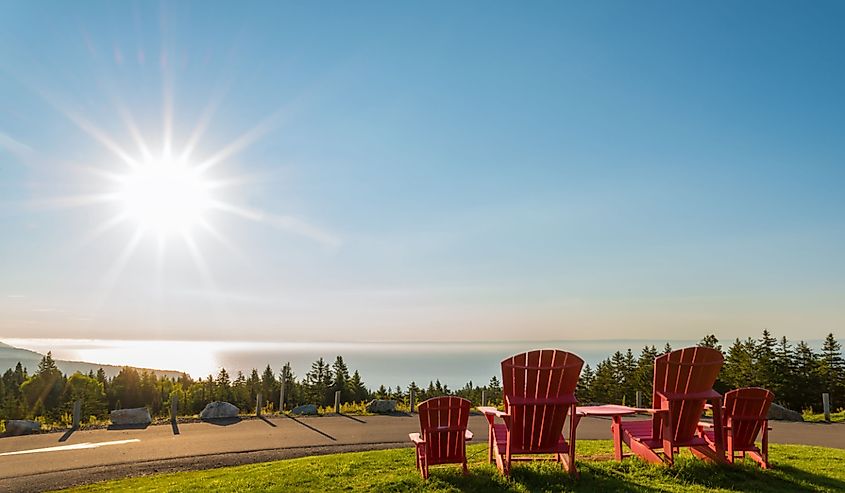
Today the Bay of Fundy is a popular tourist destination. People from around the world come to see the bay’s magnificent tides and landscapes. The tides are best seen from the Hopewell Rocks Provincial Park. At low tide, tourists can walk around giant sea stack monoliths and watch the tide rise around them. At high tide people can enjoy kayaking around the rocks.
Fundy National Park is also a popular tourist spot when visiting the Bay of Fundy. The park is on the Bay of Fundy near the village of Alma, New Brunswick. The park has 25 waterfalls and an abundance of wildlife. There are 260 species of birds, various amphibians and reptiles and forty species of mammals.
Conclusion
The Bay of Fundy is a natural wonder with interesting geological features and the world's highest tides. Tourists can enjoy a wide range of activities to explore the Bay of Fundy, from hiking to boating and whale watching. With interesting rocks, a variety of marine life, and an interesting history, there is something at the Bay of Fundy for everyone to enjoy. With so much natural beauty, it is no wonder the Bay of Fundy is a popular tourist destination today.











